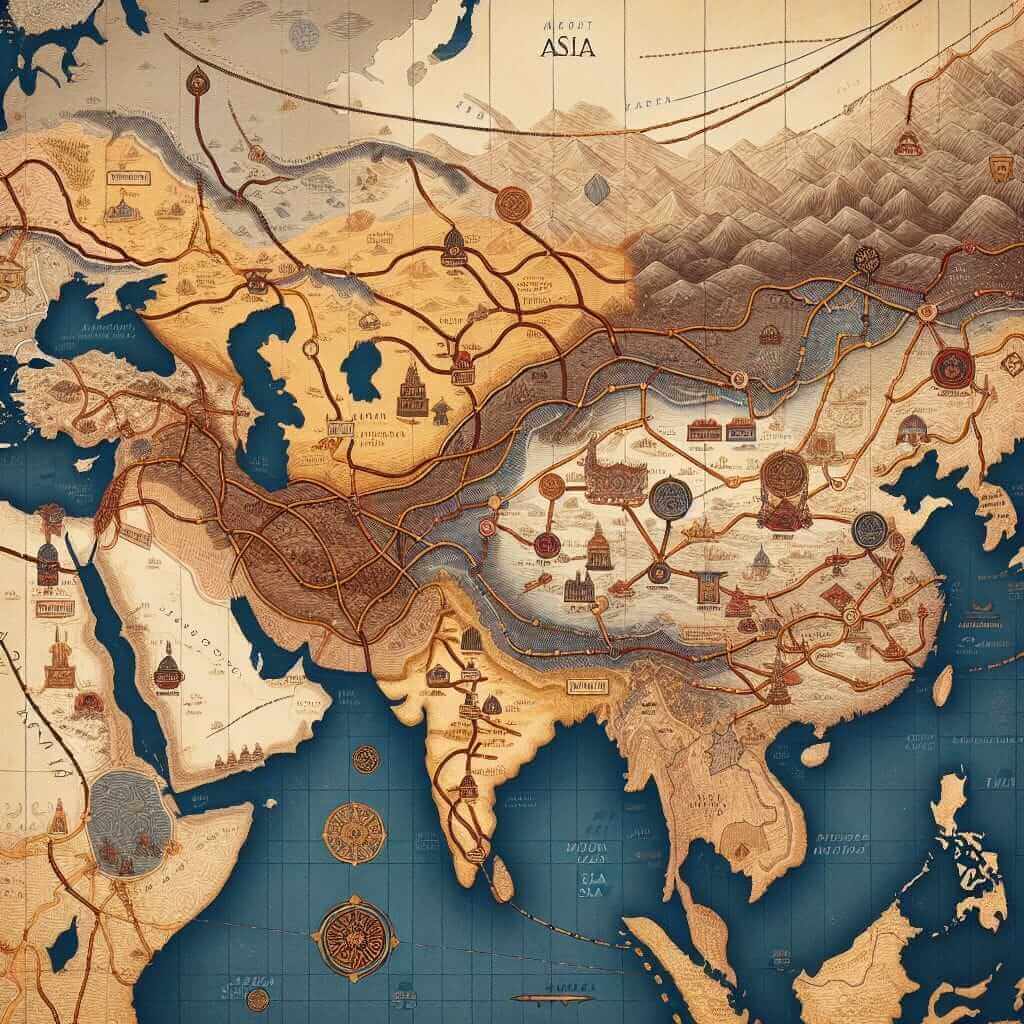The IELTS Reading test is designed to evaluate a candidate’s ability to understand and analyze written English. One common topic is the historical significance of ancient trade empires. This theme often appears because it encompasses a broad range of academic subjects like history, economics, and cultural studies, which makes it a popular choice for exam creators. Understanding how these ancient trade empires influenced the world allows students to better comprehend the passage and answer questions accurately.
Nội dung bài viết
Main Content
Practice Reading Passage: Level – Medium Text
Historical Significance of Ancient Trade Empires
Ancient trade empires were powerhouses of economic and cultural exchange, dominating large swathes of territory and impacting human civilization in profound ways. These empires utilized extensive trade networks to control resources, facilitate the movement of goods, and spread cultural practices across continents.
The Silk Road, one of the most famous trade routes, connected East Asia to the Mediterranean, allowing for the exchange of silk, spices, tea, and other luxury goods. This route not only stimulated the economies of various empires but also catalyzed the spread of ideas, religion, technology, and even diseases.

Similarly, the Roman Empire leveraged its advanced infrastructure, including roads and ports, to dominate Mediterranean trade. Roman goods such as wine, olive oil, and pottery were distributed widely, expanding the empire’s influence. The trade networks also enabled the Romans to import grain and other essential commodities from Egypt, facilitating urbanization and population growth in Rome.
The Indian Ocean trade routes linked East Africa, the Middle East, South Asia, and Southeast Asia. Maritime advancements and the understanding of monsoon wind patterns allowed empires such as the Gupta Empire in India to prosper. The resultant cultural exchanges influenced art, religion, and architecture across these regions.
However, these empires were not without their conflicts. Competition for control over lucrative trade routes led to wars and the rise and fall of various empires. Despite this, the legacy of ancient trade remains evident in the cultural and economic fabric of modern societies.
Comprehension Questions
-
Multiple Choice:
What was one key outcome of the trade conducted along the Silk Road?
a) Disappearance of local cultures.
b) Spread of disease.
c) Creation of the Roman Empire.
d) Decline of urbanization. -
True/False/Not Given:
- The Roman Empire’s trade network mainly imported goods from East Asia.
- The understanding of monsoon wind patterns was critical for Indian Ocean trade routes.
-
Matching Headings:
Match the following headings to the appropriate paragraphs:
a) The Role of Maritime Trade
b) Cultural Exchange Along the Silk Road
c) Economic Impact of the Roman Empire
d) Competition and Conflict in Trade Empires -
Summary Completion:
Complete the summary using the list of words below.The ancient __ were known for their extensive trade networks which facilitated not only the movement of __ but also the exchange of __ and cultural practices. The __, for instance, linked various regions from East Asia to the Mediterranean, promoting economic activity and spreading numerous cultural elements.
- goods
- ideas
- empires
- Silk Road
Answer Keys
-
Multiple Choice:
- b) Spread of disease.
-
True/False/Not Given:
- False. The Roman Empire’s trade network mainly dealt with Mediterranean suppliers.
- True. The understanding of monsoon patterns was crucial for Indian Ocean traders.
-
Matching Headings:
- The Role of Maritime Trade (3)
- Cultural Exchange Along the Silk Road (2)
- Economic Impact of the Roman Empire (3)
- Competition and Conflict in Trade Empires (5)
-
Summary Completion:
The ancient empires were known for their extensive trade networks which facilitated not only the movement of goods but also the exchange of ideas and cultural practices. The Silk Road, for instance, linked various regions from East Asia to the Mediterranean, promoting economic activity and spreading numerous cultural elements.
Common Mistakes
-
Misinterpretation of Information: Students often misunderstand details and generalizations in the passage, leading to incorrect answers. Practice identifying specific vs. general statements.
-
Time Management: Spend too much time on difficult questions and rush through easier ones, risking lower accuracy. Allocate time wisely.
-
Matching and Summary Completions: Matching headings and completing summaries can be tricky due to similar wording. Carefully read each paragraph and use the context clues.
Vocabulary
- Empires (noun) /ˈemˌpī(ə)rs/: Large political units ruled by a single supreme authority.
- Catalyzed (verb) /ˈkatəˌlīzd/: Accelerated or triggered a process.
- Urbanization (noun) /ˌərbəniˈzāSHən/: The process of making an area more urban.
- Monsoon (noun) /mänˈso͞on/: Seasonal wind patterns influencing maritime routes.
- Infrastructure (noun) /ˈɪnfrəˌstrəktʃər/: The physical systems and facilities serving a country or area.
Grammar
- Relative Clauses: Provides additional information about a noun. e.g., “The Silk Road, which connected East Asia to the Mediterranean, allowed for the exchange of goods.”
- Passive Voice: Used for more formal writing. e.g., “The goods were distributed widely across the empire.”
- Past Perfect Tense: Indicates actions completed before a certain point in the past. e.g., “These empires had utilized trade networks long before modern ones existed.”
Advice for Scoring High in IELTS Reading
- Regular Practice: Attempt various types of reading passages to get accustomed to different styles and topics.
- Time Management: Practice under timed conditions to improve speed and accuracy.
- Active Reading: Highlight or underline key points while reading to better locate answers.
- Expand Vocabulary: Daily practice of new vocabulary, synonyms, and antonyms.
- Review Mistakes: Understand and analyze mistakes to avoid repeating them in the actual test.
For more detailed articles on trade routes, explore our linked resources on the Historical Significance of Global Trade Patterns and the Historical Analysis of Ancient Trade Routes and Their Impacts.